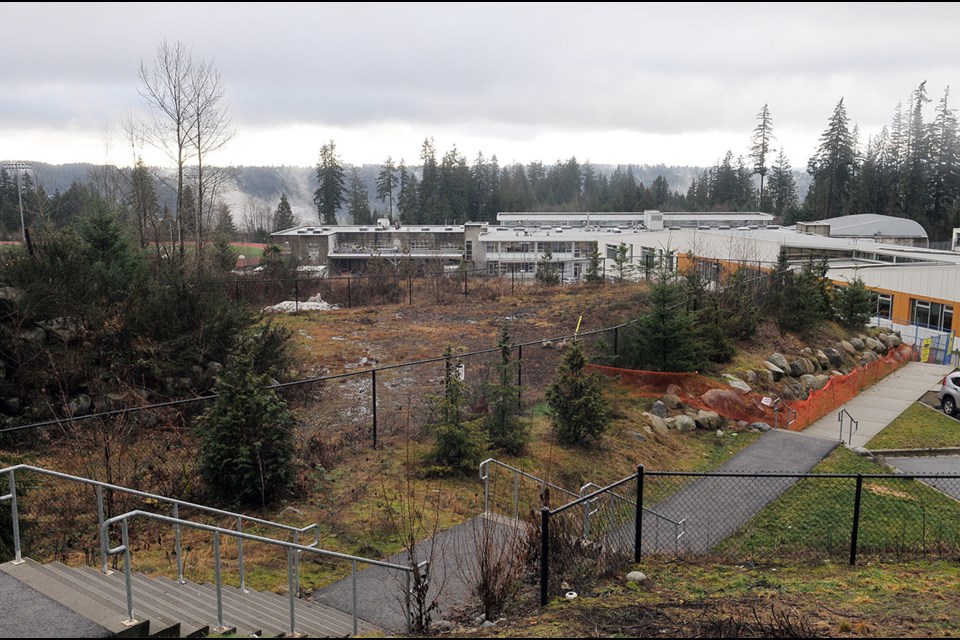The sigh of relief being breathed by parents of students attending Eagle Mountain Middle School is no longer scented by sewage.
A spokesperson for the Anmore Green Estates housing development near the school confirmed its 51 homes are now connected to Metro Vancouver’s regional sewer system.
Rob Boies, who owns one of the homes but no longer lives in the complex, said residents are feeling “a great sense of relief” now that their sewage isn’t flowing into a nearby septic field that was leaking onto the school’s property.
The discovery of the leaks in 2017 sparked a five-year jurisdictional battle involving several layers of government and the strata that manages the complex to correct the situation.
Diane MacSporran, the former president of Eagle Mountain Middle’s Parent Advisory Council, said the arduous journey to get the problem resolved was difficult, especially for students who were deprived of the full use of the school’s grounds because the hillside — and even a basketball court — had to be fenced off for periods of time to comply with a pollution abatement order that was first issued by the Ministry of Environment in November 2017, and subsequently renewed several times.
“The fact the connection took five years is beyond understanding,” she said.
“The greatest frustration from the greatest number of parents was that authorities didn’t understand that septic leaking on a school ground was a deplorable situation that required immediate attention.”
The problem first burbled to the surface when routine testing of groundwater at the base of the hillside where Anmore Green’s septic field resides showed high levels of fecal coliform and E. coli contamination.
Several weeks later, the housing development’s strata erected fencing at the bottom of the hill, which is often used as a shortcut for students coming and going to Eagle Mountain and nearby Heritage Woods Secondary School, and around a basketball court, to prevent students from coming in contact with the water.
Reaching a solution required several years of negotiation involving the provincial ministry, Metro Vancouver, the City of Port Moody and Village of Anmore, as well as School District 43. Residents of the strata agreed to cover the estimated $800,000 cost for engineering and constructing the sewer hookup to a pipe 50 m from the housing development.
It also had to pay for regular pumping of the septic field until the hookup was realized.
MacSporran, whose two children attended Eagle Mountain during the time its grounds were contaminated, but have now moved on to secondary school, said the bureaucratic wrangling that stanched a speedy resolution was unacceptable.
She said better systems need to be put in place to allow for more direct communication with the Greater Vancouver Sewerage and Discharge District, which administers the region’s sewer system and between neighbouring municipalities that might have common interests in regional affairs.
“It took unwavering, persistent advocacy and dedication of many voices from parents and community members to communicate that those parties and elected officials were expected to keep communicating and working together until a solution was reached,” said MacSporran. In fact, at one point, parents gathered more than 3,500 signatures on a petition urging a resolution.
Michael Thomas, chair of the SD43 board, said the complex legal and regulatory process, as well as the necessity for Anmore Green to secure funding for construction of the connection, required patience.
“We know that students, parents, school staff and families have been waiting for this welcome news for some time,” he said in a statement.
Boies said while some legal and zoning issues remain to be resolved, the old septic field is being decommissioned and whatever lingering sewage is left will be cleansed by Mother Nature in about 30–60 days.
“I know more about septic systems than I thought I would ever know,” he added.
Boies said there are “ongoing discussions” about the future of the field.



